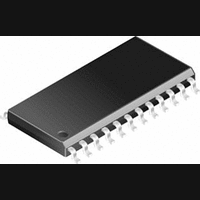USBN9603-28M National Semiconductor, USBN9603-28M Datasheet - Page 22

USBN9603-28M
Manufacturer Part Number
USBN9603-28M
Description
USB Controller IC
Manufacturer
National Semiconductor
Specifications of USBN9603-28M
Interface
USB
No. Of Pins
28
Peak Reflow Compatible (260 C)
No
Supply Voltage Max
7V
Leaded Process Compatible
No
Controller Type, Ic
USB
Package / Case
28-WSOIC
Lead Free Status / RoHS Status
Contains lead / RoHS non-compliant
Available stocks
Company
Part Number
Manufacturer
Quantity
Price
Part Number:
USBN9603-28M
Manufacturer:
NS/国半
Quantity:
20 000
Company:
Part Number:
USBN9603-28M/NOPB
Manufacturer:
nsc
Quantity:
2 690
Company:
Part Number:
USBN9603-28MX
Manufacturer:
NSC
Quantity:
189
Part Number:
USBN9603-28MX
Manufacturer:
NS/国半
Quantity:
20 000
Company:
Part Number:
USBN9603-28MX/NOPB
Manufacturer:
NS
Quantity:
3 000
Part Number:
USBN9603-28MX/NOPB
Manufacturer:
NS/国半
Quantity:
20 000
www.national.com
6.0 Functional Description
6.1 FUNCTIONAL STATES
6.1.1
At any given time, the USBN9603 is in one of the following states (see Section 6.1.2 for the functional state transitions):
The NodeSuspend, NodeResume, or NodeReset line condition causes a transition from one operating state to another.
These conditions are detected by specialized hardware and reported via the Alternate Event (ALTEV) register. If interrupts
are enabled, an interrupt is generated upon the occurrence of any of the specified conditions.
NodeOperational
This is the normal operating state of the device. In this state, the node is configured for operation on the USB bus.
NodeSuspend
A USB device is expected to enter NodeSuspend state when 3 mS have elapsed without any detectable bus activity. The
USBN9603 looks for this event and signals it by setting the SD3 bit in the ALTEV register, which causes an interrupt, if en-
abled, to be generated. The firmware should respond by putting the USBN9603 in NodeSuspend state.
IThe USBN9603 can resume normal operation under firmware control in response to a local event at the host controller. It
can wake up the USB bus via a NodeResume, or when detecting a resume command on the USB bus, which signals an
interrupt to the host controller.
NodeResume
If the host has enabled remote wake-ups from the node, the USBN9603 can initiate a remote wake-up.
Once the firmware detects the event, which wakes up the bus, it releases the USBN9603 from NodeSuspend state by initi-
ating a NodeResume on the USB using the NFSR register. The node firmware must ensure at least 5 mS of Idle on the USB.
While in NodeResume state, a constant “K” is signalled on the USB. This should last for at least 1 mS and no more than 5
mS, after which the USB host should continue sending the NodeResume signal for at least an additional 20 mS, and then
completes the NodeResume operation by issuing the End Of Packet (EOP) sequence.
To successfully detect the EOP, the firmware must enter USB NodeOperational state by setting the NFSR register.
If no EOP is received from the host within 100 mS, the software must reinitiate NodeResume.
NodeReset
When detecting a NodeResume or NodeReset signal while in NodeSuspend state, the USBN9603 can signal this to the main
controller by generating an interrupt.
USB specifications require that a device must be ready to respond to USB tokens within 10 mS after wake-up or reset.
6.1.2
Figure 18 shows the device states and transitions, as well as the conditions that trigger each transition. All USBN9603 state
transitions are initiated by the firmware.
•
•
•
•
NodeOperational
NodeSuspend
NodeResume
NodeReset
Line Condition Detection
Functional State Transition
Normal operation
Device operation suspended due to USB inactivity
Device wake-up from suspended state
Device reset
22












